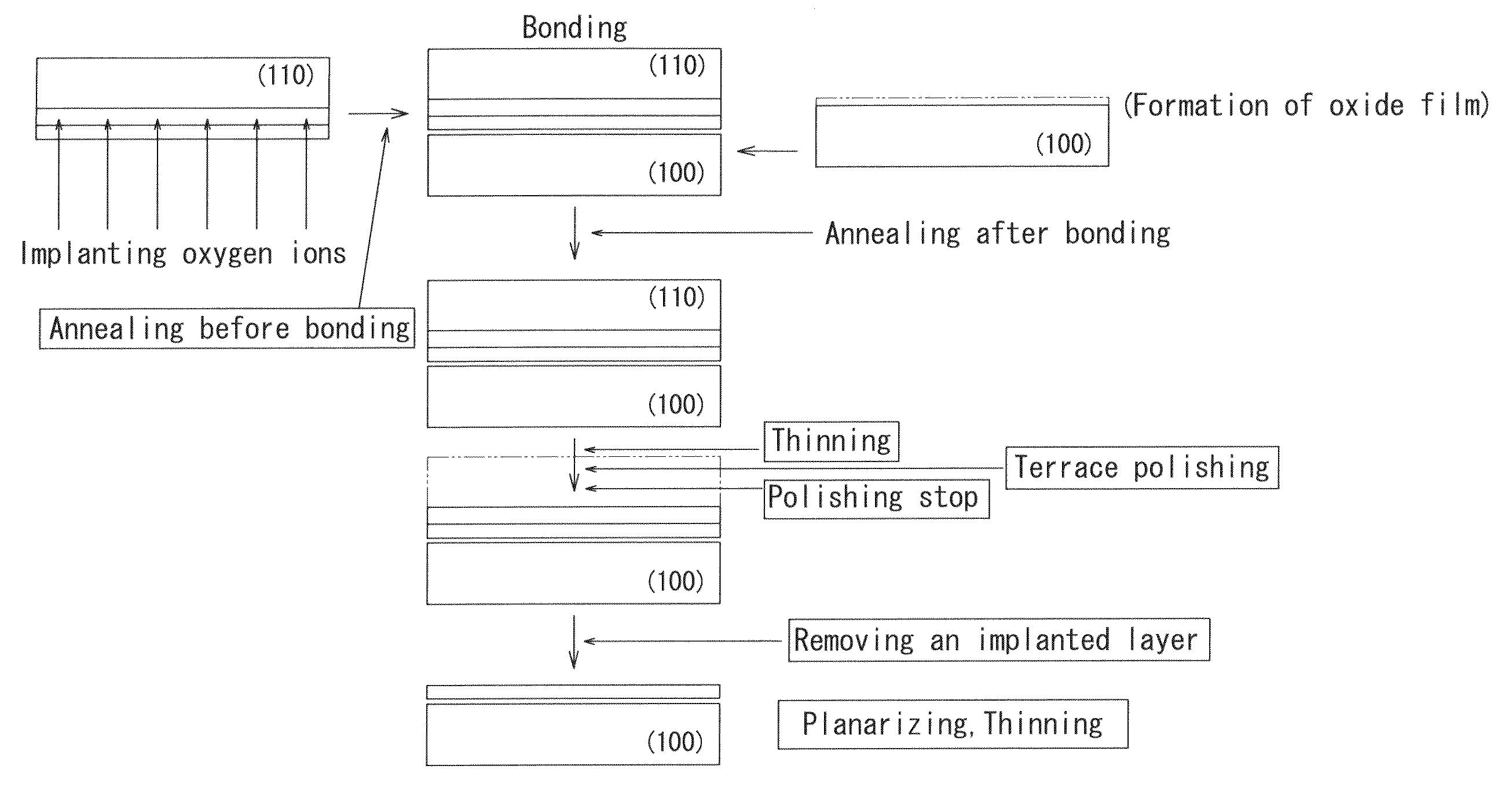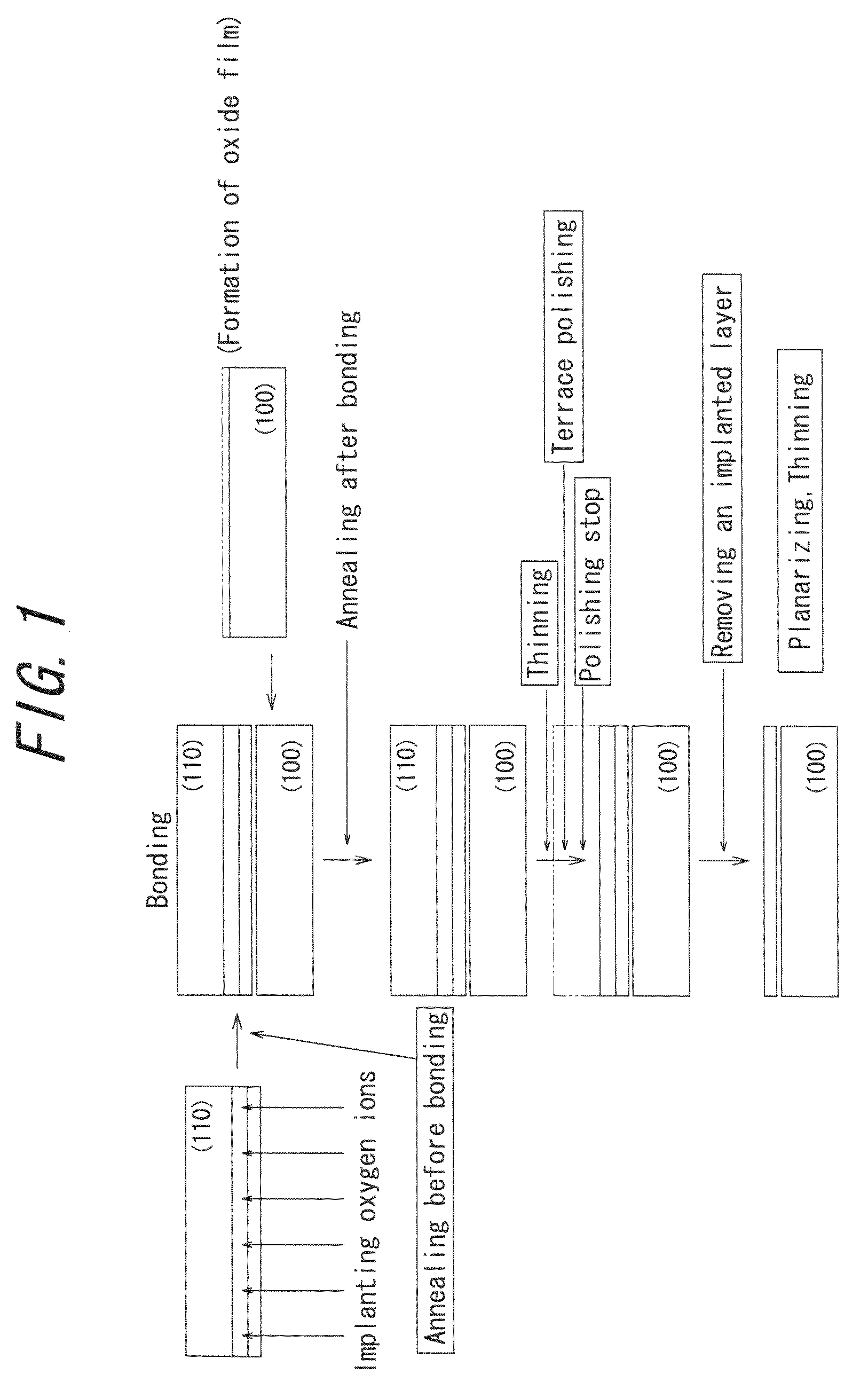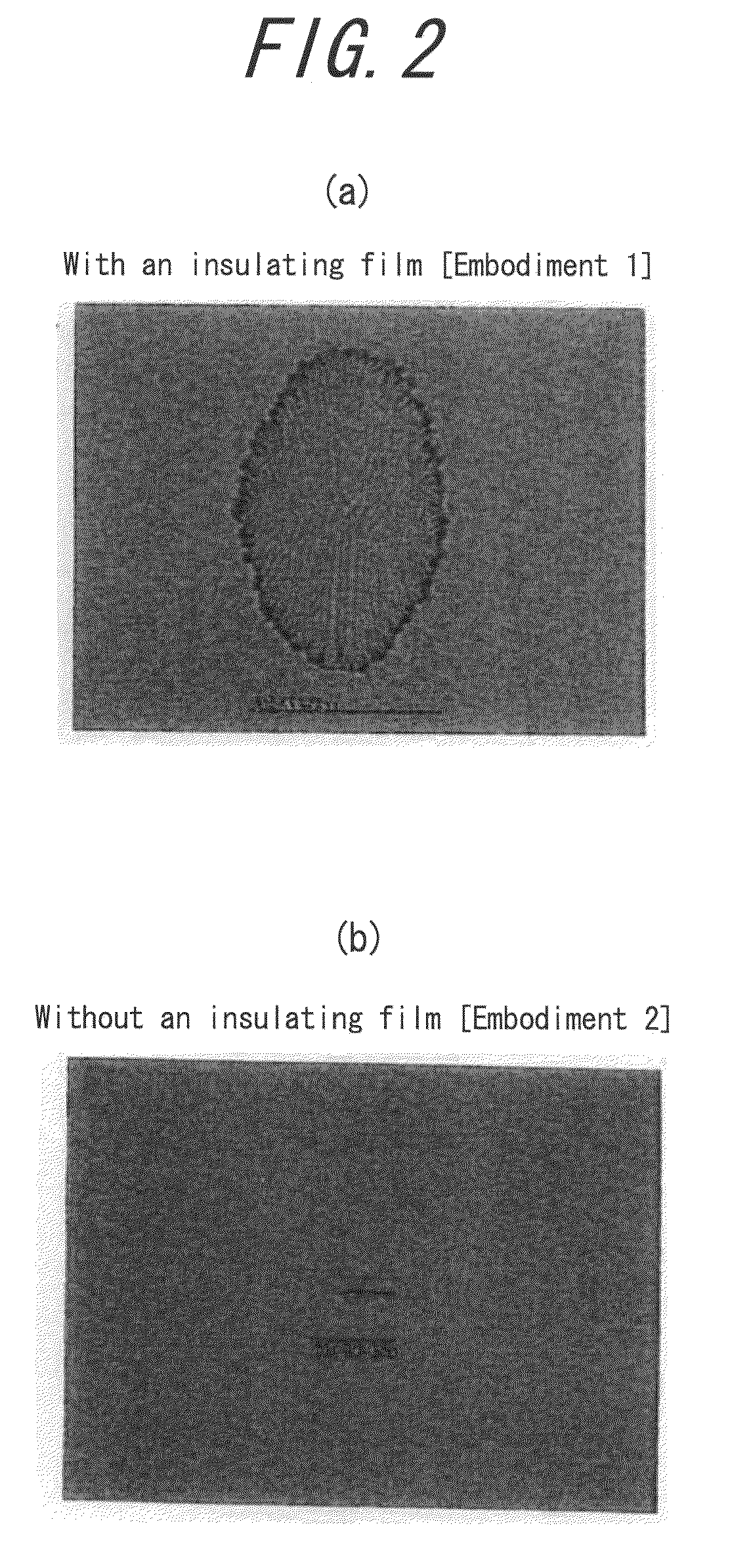Method for producing bonded wafer
a technology of bonded wafers and active layers, applied in the direction of basic electric elements, electrical apparatus, semiconductor devices, etc., can solve the problems of poor thickness uniformity of active layers, inability to produce soi structures having different crystal orientations, and 30%, etc., to achieve good surface roughness, improve thickness uniformity, and reduce defects
- Summary
- Abstract
- Description
- Claims
- Application Information
AI Technical Summary
Benefits of technology
Problems solved by technology
Method used
Image
Examples
example 1
[0101]There are provided two silicon wafers of 300 mm in diameter sliced from a silicon ingot grown by CZ method and doped with boron. One of the two silicon wafers has a crystal orientation of (110) and is used as a wafer for active layer, and the other silicon wafer has a crystal orientation of (100) and is used as a wafer for support layer. Both the wafers are p-type silicon doped with boron and have a specific resistance of 1-20 Ωcm.
[0102]An oxide film having a thickness of 150 nm is formed on the (100) wafer by treating in an oxidizing atmosphere at 1000° C. for 5 hours.
[0103]Then, an oxygen ion implantation is carried out from the surface of the (110) wafer as the wafer for active layer at an acceleration voltage of 180 keV. The oxygen ion implantation is conducted at two stages, wherein the first ion implantation stage is carried out at a substrate-temperature of 200-600° C. and a dose is varied within a range of 1×1016−1×1018 atoms / cm2. In the second ion implantation stage, ...
example 2
[0113]A bonded wafer is prepared under the same conditions as in Example 1 except that the (110) wafer for active layer is bonded to the (100) wafer for support layer without an insulating film (an oxide film). The thus obtained active layer has a thickness of 100-200 nm and the scattering in the thickness distribution in the surface is within a range of 10-20%.
[0114]Next, the defect density of the bonded wafers obtained in Examples 1 and 2 is investigated.
[0115]The form of defects generated differs between Example 1 using the insulating film and Example 2 not using the insulating film.
[0116]FIGS. 2(a) and 2(b) show optical microphotographs of crystal defects generated on the wafer surfaces in Examples 1 and 2, respectively. When the bonding is carried out with the oxide film (Example 1), an ellipsoidally-shaped defect (diameter: 100-500 μm) is observed and also the oxide film is observed in such a defect. On the other hand, when the bonding is carried out without the oxide film (Ex...
PUM
 Login to View More
Login to View More Abstract
Description
Claims
Application Information
 Login to View More
Login to View More - R&D
- Intellectual Property
- Life Sciences
- Materials
- Tech Scout
- Unparalleled Data Quality
- Higher Quality Content
- 60% Fewer Hallucinations
Browse by: Latest US Patents, China's latest patents, Technical Efficacy Thesaurus, Application Domain, Technology Topic, Popular Technical Reports.
© 2025 PatSnap. All rights reserved.Legal|Privacy policy|Modern Slavery Act Transparency Statement|Sitemap|About US| Contact US: help@patsnap.com



